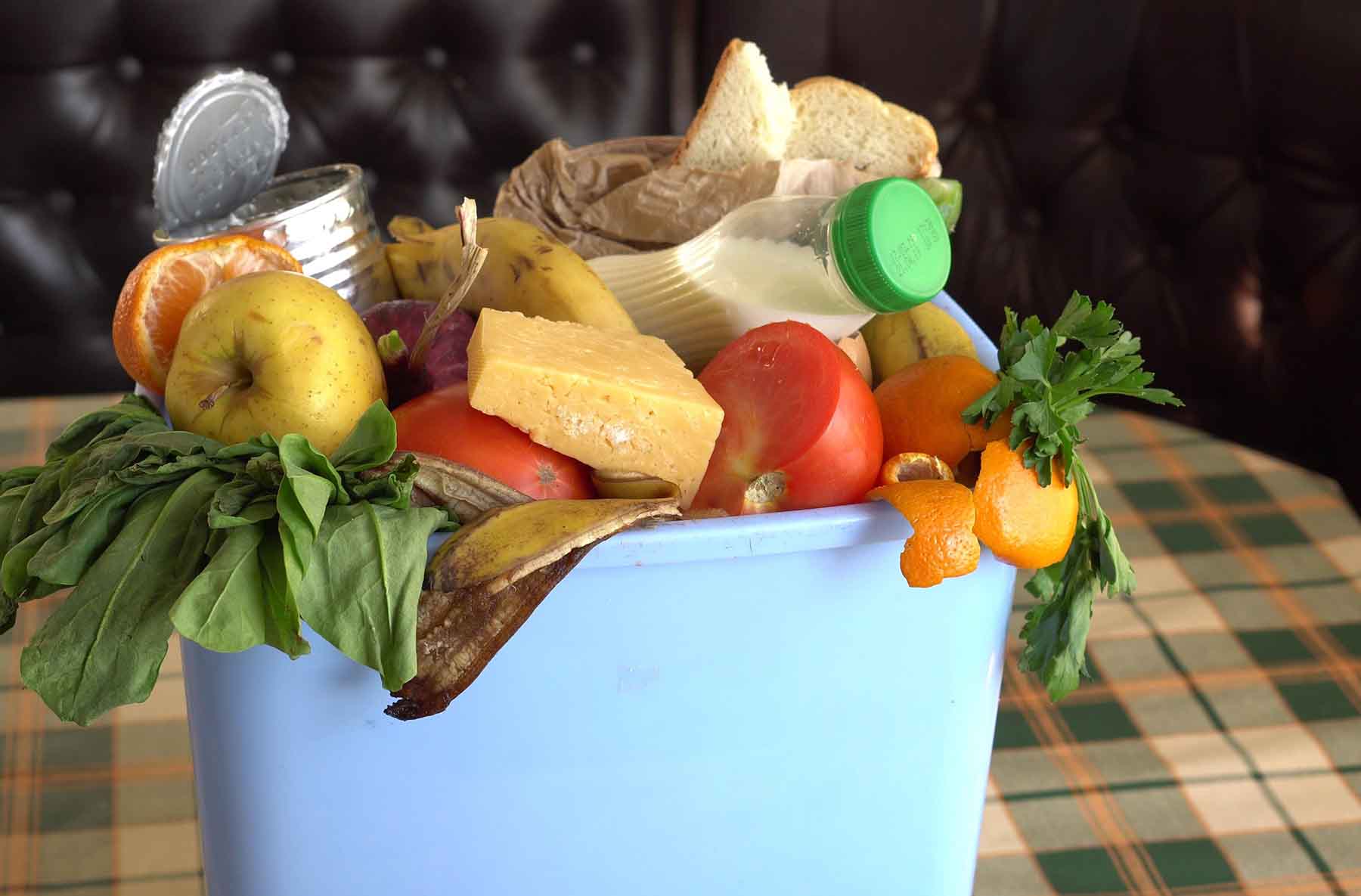8 Simple Ways to Reduce Food Waste and Save Money

Does this happen to you? You toss out mystery leftovers from the back of the fridge or throw away a half-eaten bulk box of cereal that’s gone stale. Food waste is a bigger problem than most people realize, and when you throw away food, you’re also throwing away money.
Want to learn how to waste less and save more? In this article, we’ll show you eight simple ways to reduce your food waste.
8 Ways to Reduce Your Food Waste
We don’t intentionally waste food, but with everyone’s busy schedules, it’s sometimes hard to make reducing food waste a priority. These eight tips can help you get started.
1. Make a Meal Plan – and Stick to It
One of the simplest ways to prevent food waste—and save time and money at the store—is to plan out all your meals for the week. Maybe Monday is tuna salad with walnuts for lunch and baked chicken for dinner. Tuesday’s dinner is past, and so on for the week. You can make planning meals fun and broaden your culinary horizons by searching online for tasty recipes.
When you’re at the store, you’ll know what you need to buy for each meal and can avoid tossing impulse items that you may or may not eat into your cart. With your focus on getting just what you need for meal prep, you’ll buy less and waste less! Remember, you don’t have to eat every meal at home. You can factor pizza night or lunches with friends into your meal plan.
2. Go Shopping With a List
Once you’ve planned your list, it’s time to go shopping. Make your list based on the number of meals you’ll eat at home. Think about how often you’ll eat out, whether you’ll have frozen or precooked meals, and if you’ll eat leftovers for any of your meals. A good way to avoid overbuying and wasting food is to include quantities in your list, such as “salad mix: enough for two meals.” You can use the Notes app on your phone to make your list, or just tape a piece of paper to the fridge—whatever works best for you.
Another way to save money at the store is to check your pantry, fridge, and freezer before bringing home more groceries. You might think you need ketchup or cereal, forgetting that you already have some in the cupboard. Keeping a weekly shopping list of what you run out of when you run out of it will help you avoid duplicate purchases.
To make sure you don’t overspend, never shop when you’re hungry. Shopping discipline can go right out the window when you’re hungry, and you might end up filling your cart with impulse snacks and goodies that aren’t on your list. Shopping on a full stomach will help keep you from emptying your wallet at the grocery store.
3. Buy “Ugly” Produce
What’s ugly produce? According to the FDA, it’s fruits and vegetables that have physical imperfections but aren’t spoiled. A lot of shoppers avoid “ugly” produce in favor of better-looking fruits and vegetables, but imperfect produce is just as safe and nutritious and is often sold at discounted prices.
Less-than-pretty produce has many practical uses. You can chop up veggies for sauces, soups, and stews, or toss fruit in a blender for a nutritious smoothie. You’ll get a tasty meal, save money, and help reduce food waste.
4. Don’t Overstock Your Fridge
A well-stocked fridge can be helpful with meal preparation. On the other hand, an overstocked fridge can quickly lead to food spoilage. To prevent waste, the FDA recommends designating a specific section of your fridge for food products that are about to spoil and using them first.
It’s tempting to stock up, especially if you see a good sale, but avoid buying more than you need, especially perishables like produce or dairy products. You’ll likely end up throwing a lot of it away.
5. Store Food Properly
Storing food properly, especially perishables, will help you keep groceries fresher longer and eliminate waste.
Here are some tips:
- Leafy greens, carrots, cucumbers, and broccoli should go in the high-humidity drawer of the fridge.
- Most fruits, as well as mushrooms and peppers that may rot, should be kept in the low-humidity drawer of the fridge.
- Bananas, apples, pears, stone fruits, and avocados release ethylene gas as they ripen, which makes nearby produce ripen. Store these away from other produce.
- To prevent mold, wait to wash berries, cherries, and grapes until you’re ready to eat them.
- Set your refrigerator to maintain a temperature of 40°F or below.
- Because the door is the warmest part of the refrigerator, don’t store milk or eggs there. Condiments like ketchup and mustard can be stored in the door for easy access.
- Store meat, poultry, and fish on the lower shelves, which are the coldest part of the fridge.
- Potatoes, eggplant, winter squash, onions, and garlic, should be kept in a cool, dry, dark, and well-ventilated place.
- Grains should be stored in airtight containers and labeled with the contents and the date.
6. Get Creative with Leftovers
When you toss out leftovers, once again, you’re throwing away food and money. Reusing leftovers is a simple and easy way to reduce food waste. Here are some ideas:
- After finishing a meal, pack leftovers in shallow containers and pop them in the fridge or freezer immediately. You now have lunch or another night’s dinner.
- Repurpose leftovers: If you made baked chicken, use the leftovers for sandwiches, pot pies, soup, or salad later in the week.
- Lunch on leftovers: Going out to lunch can get expensive. If you spend $12 twice a week, that’s $96 a month. Bringing leftovers from home can help you save a lot!
7. Be Careful Buying in Bulk
While buying a 96-roll pack of toilet paper can be a smart purchase, buying a 40-pack of yogurt probably isn’t, because toilet paper doesn’t spoil. That’s why experts recommend not buying in bulk for most food items. You may find great prices on things like a five-pound box of cereal or a giant container of cheese balls, but if you don’t eat them before they get stale, that’s a lot of food that’s going to waste, and with it goes any savings.
However, buying in bulk isn’t always bad. If you buy food from bulk bins, such as cereal or nuts, you can purchase just what you need instead of a predetermined amount. This saves on packaging, saves you money, and reduces waste. Be sure to store the food in airtight, labeled containers so it won’t get stale; store most nuts in the refrigerator.
8. Make the Freezer Your Friend
Your freezer is a great place to store leftovers, but go a step further by preparing meals and freezing them for later. When dinnertime comes around, just take them from the freezer and heat them up! You’ll find lots of recipes online for freezer meals to tantalize your taste buds. Best of all, freezer meals are a win-win, saving you both time and money. Here are a few more freezer tips:
- When you buy chicken, fish, or other raw meat, portion out what you’ll need for the week’s recipes and freeze the rest.
- Store bread or bagels in the freezer and defrost or toast when you need them. This helps keep baked goods from getting stale.
- Freeze berries and overripe bananas and use them for your next flavorful smoothie or baking.
- Cut up and freeze veggies to use in soups and stews.
More Ways to Reduce Waste: Compost and Donate
With just a little effort and planning, you can reduce food waste while also saving money. Here are a couple of additional tips:
- Instead of tossing your vegetable food scraps in the garbage, compost them. You reduce your carbon footprint while giving nutrients back to the soil.
- Consider donating excess food to a local shelter or food pantry. The food that you don’t plan to use can help individuals and families who really need it.
Track Your Saving and Spending with American Heritage Tools
Don't forget to use the free resources at your disposal to improve your financial wellness. Using tools like My Money Manager, located within your Online Teller account, you can track your savings goals, set budgets, view expense categories, and more. Check out My Money Manager today to begin your budgeting journey!

